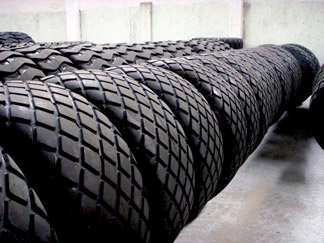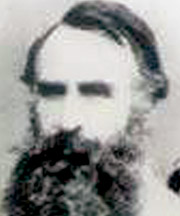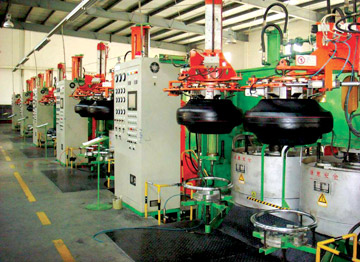Challenging times for tyre industry
Dr. N. Yogaratnam
Robust automobile sales notwithstanding, tyre manufacturers have been
facing rough weather in recent times. Unabated rise in the price of
natural rubber, a key raw material due to tight supply conditions and
increase in other crude-based inputs have dampened their margins and
earnings.
|

Tyre manufacturers moving into Asian region to cut costs |
Given the strong demand, the tyre producers have been able to pass on
some portion of the material cost increases to customers through
periodic price increases.
Nevertheless, according to some leading Indian tyre manufacturers,
for the nine months ended December 2010, while net sales grew about 30
to 35 per cent year-on-year, net profits have fallen from Rs 137 crore
to Rs 49 crore , about 180 percent reduction. Raw material costs as a
percentage of sales for the first three quarters of 2010-11 have jumped
to 77 percent from 58 percent seen in the same period last year. A lot,
nonetheless, will depend on how rubber prices move.
Tyre technology
Tyre is a high technology product, an amalgam of several otherwise
incompatible materials like natural rubber, synthetic rubber, steel,
nylon, carbon black, rubber chemicals etc. It absorbs shock, rolls
freely, distorts in shape while cornering, braking and crossing
obstacles, yet regains the shape quickly, provides road grip and offers
driving comfort. Tyre making needs multidisciplinary technology
involving physics, chemistry, engineering, metallurgy, textile
technology and polymer science.
History of tyre development
Pneumatic tyre was first invented in 1845 by Robert William Thompson,
a Scottish engineer and inventor. He secured a patent, but it was not
commercialised as the age of motor transportation had not arrived then.

John Boyd Dunlop |

Robert William Thompson |
Four decades later John Boyd Dunlop, a Scottish veterinary surgeon,
reinvented and patented the pneumatic tyre in 1888. Since then, several
developments have taken place in the design and composition of the tyre.
In the early years of motoring, a car tyre cost as much as US$100,
but ran only for about 750 km. By 1900, the cost fell to US$30 and the
mileage rose to 20,000 km. With the development of radial tyres in 1946
and further improvements in tyre design with steel, polyester and aramid
belt, life of tyre tread has risen to over 160,000 km. Retreading can
prolong its life many times.
The first aircraft tyre was produced in 1910 and the truck tyre
emerged in the US around 1917. Phenomenal developments took place during
World Wars I and II and the industry has made tremendous progress since
then, developing pneumatic tyres suited to different vehicles such as
bicycles, motorcycles, passenger cars, trucks, tractors, earthmovers,
aircrafts and other off-the-road vehicles. Solid tyres have also been
developed for several shop floor, industrial and commercial
applications.
However, cycle tyres have not seen much technological development
though a number of cycle tyre units have come up the world over. Tyres
for motorcycles, other two and three-wheelers are made in small
factories, but tyres of passenger cars, trucks, buses and the like are
produced in big factories.
Tyre basics
The pneumatic tyre has undergone many changes in response to rising
demands of modern transportation. Two features may remain unchanged at
least in the near future - use of pressurised air to support the load
and use of rubber in the tread to provide traction.
The air cushion improves riding comfort and helps spread the load to
a larger contact area with less stress concentration.
|

Tyre making in progress |
Tyre is capable of operating on a variety of surfaces such as
highways, unpaved terrains and even on soft sand beaches. Modern
vehicles owe their manoeuvrability to rubber in the tread and its
capacity to provide dry tractive ratio, i.e., longitudinal shear divided
by the contact pressure greater than 1.
Pneumatic tyre has a toroidal structure with typical cross-sectional
geometry. Its major components are the tread, belts, carcass plies,
inner liner, bead, chafer, apex or head filler and side walls. Some
tyres have white side wall component with a protective black cover
strip.
Tread/cap: Tread or cap is the part coming into contact with the
road. Though it serves to protect the tyre casing from cuts/punctures,
its major role is to provide wear resistance and the critically
important traction for generating the force for vehicle manoeuvring.
The pattern mould in the tread serves mainly to improve road grip in
rain or on snow, and it plays an aesthetic role. Tread patterns are
major sources of excitations that contribute to ride vibrations and tyre
noise.
Belts and belt cap: Tyre belts located between the tread and the
carcass plies are typically made of two cross plies of tyre cord made of
cotton, rayon, nylon, steel or aramid. Fibre glass belts were popular in
the 1970s and early 1980s.
Introduction of belts in the belted construction of the late 1960s
improved the performance of cross ply tyres. Belts in radial tyres are
essential to bolster the radial carcass in the circumferential
direction.
The belt reinforcement provides a solid foundation for the tread and
vastly averts interfacial slippage between the tyre and the road during
free rolling.Cross ply tyre casing will deform during road contact
without belt reinforcement, forcing the tread elements to slip during
free rolling. Belted radial tyre provides better handling generating
more efficient lateral force, as the slippage is only moderate during
normal cornering.
A zero degree (circumferential) nylon over-wrap or cap is provided
over the belts. This checks their growth due to centrifugal force and
improves the tyre's durability under high speeds. The cap also smothers
the formation of standing waves at high speeds.
Carcass: Carcass is made of rubberised fabric such as rayon,
polyester, nylon, steel or aramid. This layer functions as a membrane or
tensile structure whose surface tension caused by the load on the tyre,
is carried mainly by the cords attached on both ends of the tyre's
beads.
Inner liner: Inner liner is the innermost layer of a tyre body,
typically made of low permeable rubber such as halobutyl, to slow the
tyre's loss of air pressure due to diffusion. The inner liner is also
important for reducing the diffusion of oxygen in the tyre body,
particularly in the belt area.
Bead and chafer: Bead is a hoop typically made of bronze coated high
tensile multi strand wires or cables. Usually coated with rubber, it is
often fabric wrapped to protect the adjacent carcass plies. The pair of
bead rings provide anchor for the carcass cords and support the cord
tension.
For a tubeless tyre, the bead also makes the seal, through a tight
interference fit against the wheel rim flange that contains the internal
air pressure. Forces generated in the tyre road contact are transmitted
through the bead and rim contact to the vehicle. The chafer is an
abrasion resistant rubber sometimes reinforced with fabric, to protect
the tyre's lower sidewall from chafing against the rim flange.
Apex and bead filler: This is a component with triangular cross
section that fills the void between the carcass ply and its turn-up
around the bead. It serves to strengthen the area above the bead to
remove rim chafing.
A larger bead apex is often used in the radial tyre carcass, to
stiffen the lower sidewall and enhance both the lateral and the
torsional stiffness of the tyre casing.
Side wall: This protects the carcass. The side wall compound requires
good flex life and resistance against weathering and ozone cracking. The
side wall on the out-board side is made slightly thicker for more
protection against abrasion with road curbs.
Main tyre types
With the advancement of technology, mainly five types of automobile
tyres are produced - cross-ply, radial ply, bias-belted, steel or aramid-belted
radials and tubeless tyres. Cross-ply tyres are the oldest type with
casings made of two or more plies or layers of fabric which run
diagonally from bead to bead, crossing one another at an angle of about
40o at the crown. Tyre strength and load-bearing capacity are indicated
by the number of plies.
Radialisation has turned out to be an important milestone in tyre
technology. The radial tyre has core threads of the casing run at an
angle of 90o to the direction of travel; i.e., they run radially from
bead to bead.
Between the casing and the thread, there is a stabilising belt made
of inextensible material on the top of the carcass but below the thread.
This thread makes the tyre stronger.
Bias belted tyres are made based on the concept of belt from radial
construction. The radial construction concept is extended to steel and
the carcass and the belt material are made with steel cords. Performance
of steel belted tyres is superior and they became very popular.
The method of manufacturing tyre had not changed much in about 100
years from the invention of pneumatic tyre, but the changes thereafter
have been rapid. Traditional tyre making was slow and labour-intensive,
requiring many separate operations and generating considerable waste.
Michelin made a revolutionary departure from this in 1997 when it
introduced the C3M process.
The C3M process uses a single, solid insert mould that reduces the
process to a single phase instead of the traditional seven steps in tyre
manufacture. It allows tread to be created with enhanced accuracy. The
C3M process improves performance balance between wear and grip,
especially in radial tyres.
The C3M process brought about dramatic savings in capital costs,
factory space, labour and waste, besides offering operational
flexibility. Even a complete plant could be airlifted and erected in 24
hours whenever extra capacity was needed and it could be dismantled and
shipped out just as rapidly.
Taking the Michelin cue, other tyre majors have announced new
proprietary manufacturing methods, each claiming large savings - IMPACT
(Goodyear), MMP (Continental), MIRS (Pirelli) and BIRD (Bridgestone).
Exciting developments
(a) Run-flats: Then came the development of run-flat tyres and
intelligent tyres. Run-flats are capable of running with loss in air
pressure due to puncture or other factors, at a speed of around 80 km
for a distance up to 100 km.
Runflat tyre, with an insert mounted on the wheel or a rubber
internal component to withstand high deflection and the vehicle load
during deflated run of the tyre, may become commonplace in the near
future.
(b) Intelligent tyre: Intelligent tyre has a Tyre Pressure Monitoring
System (TPMS) or other monitoring or reporting systems aided by
electronic sensors. A computer chip embedded in the intelligent tyre
monitor tyre pressure and temperature, wheel load, grip level and wear
status and communicates with vehicle dynamic controllers and driver
assistance systems. This helps the driver know the tyre condition every
now and then and keeps the tyre in perfect inflation pressure.
Reduction in rolling resistance makes the ride smoother and brings in
economy in fuel consumption. Rolling resistance has been brought down by
tyre design and compounding.
Studies have shown that under-inflation of 0.5 bars would enhance
bars would enhance rolling resistance of the tyre by 12 percent, which
in turn would lead to 2 percent higher fuel consumption in city traffic.
At the same time if rolling resistance is reduced by 10 percent, it will
improve fuel economy by 1.5 percent.
The tyre designers are also looking for developing an energy
supplying piezo element to replace the battery of the sensor. Steps are
also on to automatically monitor the tyre inflation, running temperature
and revolution count data.
A system that combines low tyre pressure monitoring and
self-inflation capability to maintain constant air pressure may also
emerge in the near future.
Super single: Another advancement is development of super single tyre
with wide tyre base, for commercial trucks that carry heavy loads. This
single tyre can replace the twin tyres at the rear and middle points of
heavy trucks. Lower weight of the single tyre also brings down rolling
resistance to the extent of 12%. The single tyre has been found to
improve the truck's stability and reduce the pavement damage to a
significant extent due to the wider base of the tyre.
(d)Self-sealing: Self-sealing tyres are also under development to
ensure extended mobility avoiding punctures. Green tyres are getting
perfected, integrating silica into the rubber compound to reduce fuel
consumption, carbon dioxide emission and enhance safety and life of the
tyre tread.
(e) Nitrogen inflation: Inflation of the tyre with nitrogen gas in
place of air is catching up with the time.
Nitrogen gas can maintain tyre pressure at the optimum level for a
longer period and drastically reduce the damaging effect of rubber
oxidation that weakens tyre rubber.
Nitrogen inflated tyres can bring down tyre blowouts in hot operating
conditions. They would be better suited for regions of elevated summer
temperatures in the gulf countries, India, and in other arid zones.
Other advances
Wet tyres have been developed for sports vehicles for smooth ride on
dry roads and slick tyres for trouble-free ride in damp conditions.
Solid tyres of aspect ratio lower than 0.35 with carbon fibre ring
wheel has been developed for military combat vehicles. The wheel rim is
bonded to soft polyurethane foam to absorb shocks. Such tyres are better
suited to eliminate tyre blowouts.
Yarns of aramid are made use of in reinforcing sidewall of the tyres
to make it highly resistant to cuts and punctures.
Such sidewalls offer higher puncture resistance of approximately 35
percent. Aramid is also used to make tyre belt.
Its advantage is less weight for the tyre. Replacing steel components
of the tyre with aramid has been found to reduce tyre weight by 20
percent. Low tyre weight abets savings in fuel consumption.
Latest in the technological breakthrough is the development of
self-inflating tyre (SIT). It was patented by the Prague-based company
Coda Development.
A pump system is built into the tyre. While the tyre rolls, the
peristaltic pump forces air through a liquid filled tube to maintain
pressure at a set level. The tyre is reported to eliminate the need for
pressure checks, making it maintenance-free.
Its developer, Frantisek Hrabal of the Coda Development Company, won
the 2009 Tire Technology of the Year Ward in Hamberg.
Tyre labelling
Tyre performance is getting more attention in many countries. The
European Union has enacted legislation on tyre labelling. Tyres entering
the European market, whether indigenous or of overseas origin, should
bear label on fuel efficiency, rolling resistance, wet grip and noise
levels. The European Tyre and Rubber Manufacturers Association has
supported the move. This initiative is expected to help the consumers to
purchase tyres that surpass the limits set in the vehicle safety
regulations.
Outsourcing
In recent times, owing to high labour cost in developed countries,
tyre majors have been looking for contract manufacturing or putting up
production ventures in regions where labour cost is low and raw material
supply is not a problem, either independently or jointly with local
manufacturers.
Some of them have established production facilities and R&D units in
China, India and other Asian countries to make production
cost-competitive.
Developed economies now find outsourcing cheaper than indigenous
production. Outsourcing is not confined to manufacturing. In research
and product development, many are drawing on the vast pool of technical
manpower in India and China.
The expanding implementation of microprocessor technology in on-board
automotive systems, along with advances in sensor technology and
improved control algorithms, is assisting integration of the
automobile's active suspension components and braking control systems
with sensor information on the vehicle's attitude and the tyre's
deformation and slip rate, leading to the development of the so-called
'small tyre'.
The many developments in the tyre industry are helping production of
tyres with an unprecedented balance and other advanced performance
characteristics - more durability, better uniformity, shorter product
development cycles, faster 'speed to market' etc. All these indicate
that the tyre and tyre products industry is passing through exciting and
challenging times. |



